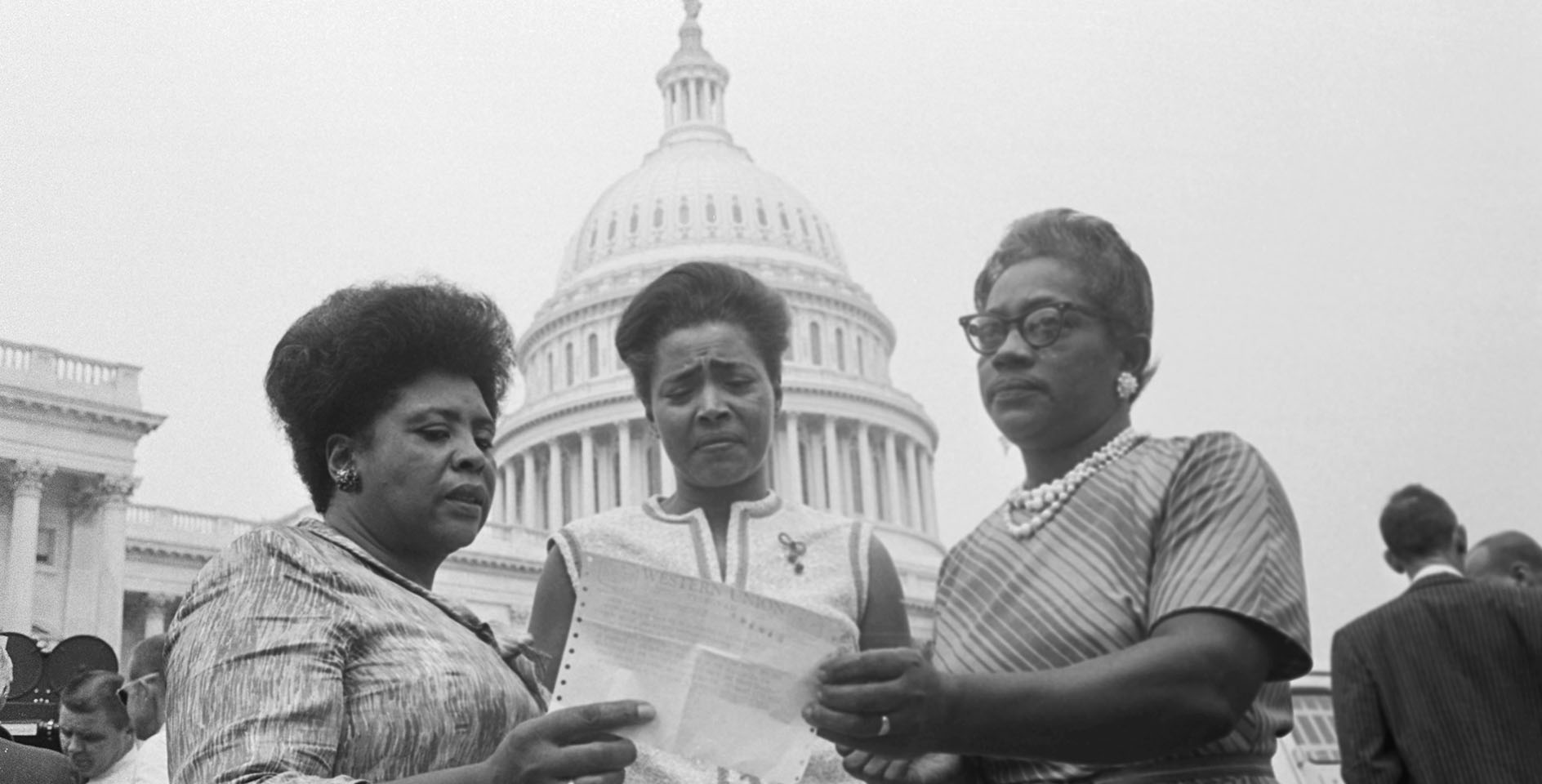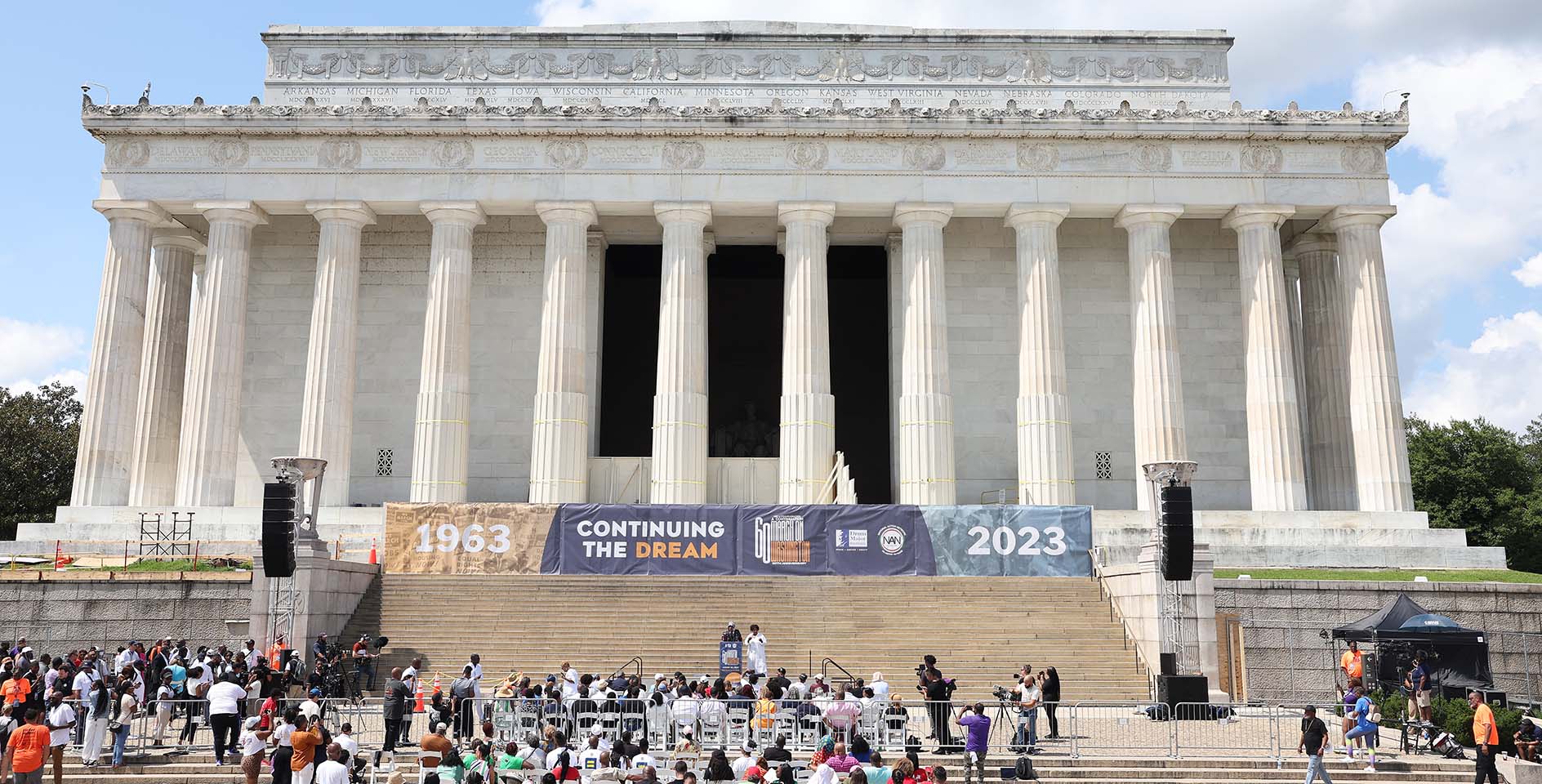Many who think of the civil rights movement often picture it through the lens of its great male leaders. Martin Luther King Jr sharing powerfully about his dream for America. John Lewis of the Student Nonviolent Coordinating Committee (SNCC) giving a speech before the March on Washington. Ralph Abernathy of the Southern Christian Leadership Conference (SCLC) marching on the front lines at Selma.
However, these men were not the only figures who led during the movement. Women worked and marched and bled alongside the men during the freedom struggles, even if they were not as prominent in media appearances. As Andrew Young, who worked closely with MLK as part of the SCLC has said, “There could not have been a civil rights movement without the sacrifice, the vision, the support and the hard work of the thousands of women.” Below are just three of the women who were crucial to the work of the freedom struggle.
Septima Poinsette Clark (1898–1987)
Septima Poinsette Clark was described as the “mother of the movement” or the “queen mother” of civil rights because of her long activity in the struggle for freedom. Born in 1898 in Charleston, South Carolina, to a former slave and his wife, she would go on to become a teacher in the state at a Black school on Johns Island. She was active in the work of the NAACP, even participating in a lawsuit that gave equal pay to Black and white teachers in South Carolina. However, she was fired from her job in 1956 when the state passed a law forbidding state employees from belonging to civil rights organizations.
Rather than forego her civil rights work, she left her position as an educator. She went on to focus her time more on the activism that she had begun earlier. She was already working with the Highlander Folk School in Tennessee which was focused on training activists and leaders in the civil rights movement (Rosa Parks was one of the trainees just a few months before her refusal to give up her seat in Montgomery). Clark led the institute in providing literacy training, citizenship information, and helping African Americans complete voter registration forms. She would go on to work with the SCLC in their Citizenship Education Program performing similar work to what she had done at Highlander.
She was eventually recognized by President Jimmy Carter for her work in civil rights. Furthermore, in 1976, the state of South Carolina admitted that she had been unjustly fired and reinstated her teacher’s pension. She stands out because her work began long before people traditionally think of the civil rights era, but was crucial for the legislative and judicial victories that would occur during the 50s and 60s.
Fannie Lou Hamer (1917–1977)
The work of the civil rights movement would not have occurred without the activity of local, grassroots organizers. Mississippian Fannie Lou Hamer serves as a powerful example of the ways that Black women were crucial in mobilizing people in support of the movement. Born to poor sharecroppers in the Mississippi Delta in 1917, she would leave school at age 12 to pick cotton with her family. In 1944, she would marry her husband Perry Hamer, and the couple began working for B.D. Marlowe as sharecroppers on his plantation. In 1961, she attended a meeting of SNCC and SCLC were she began her role as a SNCC organizer.
The next year, she and a group attempted to register to vote in Indianola but were denied because of a literacy test. As they were leaving, they were harassed and fined $100 by the police because the bus they were on was “too yellow.” Hamer was also fired by Marlow (though her husband was required to stay on and complete the contract), and after the season was complete he confiscated much of their property, necessitating their move to Ruleville, Mississippi, where she became a leader in organizing individuals to vote. She would be arrested and jailed in Winona in 1963 because she sat at a “whites-only” bus station restaurant. During her night in jail, she was beaten, leading to lifelong injuries.
Hammer was also a founder of the Mississippi Freedom Democratic Party (MFDP) which protested the work of the local Democratic Party’s exclusion of African Americans. At the 1964 Democratic National Convention, the MFDP asked to be recognized as the official delegation rather than the all-white delegation sent by the Mississippi Democratic party. Though national leadership attempted to deny her press coverage, her impassioned speech, with its descriptions of injustice in the South, was televised. She was also instrumental in the organization of Freedom Summer which brought college students to the South to help register African Americans to vote. At the grassroots level, Hamer is representative of the thousands of women who organized in their communities, worked tirelessly, and mobilized others in the fight for equal rights and justice.
Diane Nash (1938– )
Diane Nash is representative of the many college students who were crucial to the ativism that led to the end of the Jim Crow system. Though she initially started college at Howard University in Washington, D.C., she transferred to Fisk University in Nashville after a year. As a native of Chicago, it was in Nashville that she experienced the full weight of Jim Crow and its effect on African Americans. She began attending nonviolence workshops led by James Lawson, and though initially skeptical, she came to agree with their effectiveness.
Nash was one of the leaders of the students who participated in department store sit-ins in Nashville to protest segregation because she ably presented herself to the press and police. She was especially noted for her refusal, when arrested, to post bail. In one instance, she along with her fellow detainees, told the judge that to pay bail would be “contributing to and supporting the injustice and immoral practices that have been performed in the arrest and conviction” of the protestors. Nash and her fellow students were not going to let the state profit off their protest or validate the actions of the state in unjustly arresting them.
Nash played a role in the founding of SNCC, eventually assuming the role of leading their direct action campaigns. She also helped to continue the Freedom Rides of 1961 through coordination and support. She would eventually be arrested in Mississippi on the charge of contributing to delinquency of minors because of her role in teaching them nonviolence. Though pregnant, she opted to serve her sentence rather than post bail, continuing her long-standing principle of “jail without bail.” The judge chose to suspend her sentence rather than face the negative publicity likely to arise from sending a pregnant woman to jail. Nash, and the many college students like her, were often on the front lines of direct action and leaders in the nonviolent movement. Her activity in coordinating and organizing that activity was crucial to the work of freedom.
Clark, Hamer, and Nash deserve to be lauded and remembered for their tireless efforts in the civil rights movement. Each of these women — along with those whose names we might never know — contributed to the long-overdue recognition of every human being’s right to be treated equally and with dignity. May we all have such a heart for our fellow man and for the pursuit of justice.
Image caption: The House of Representatives met today to affirm seating of its Mississippi members, as Civil Rights demonstrators massed in silent support of their claim that the State’s elections were illegal because blacks were barred from the polls. They are, left to right: Fannie Lou Hamer, Victoria Gray, and Annie Devine.










